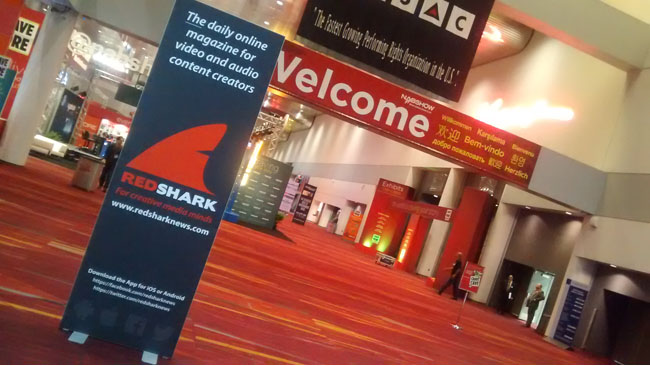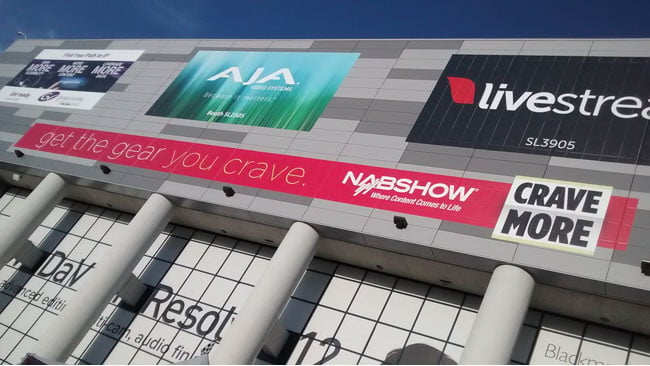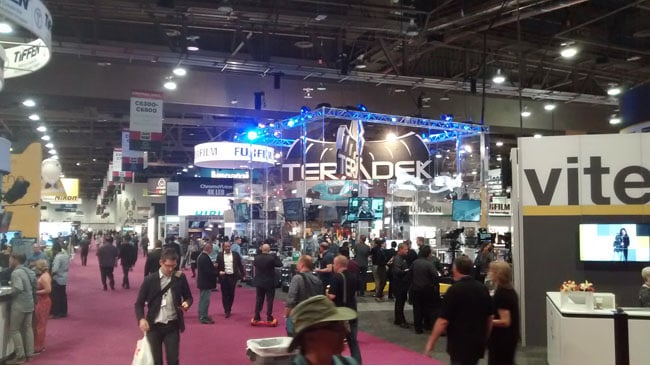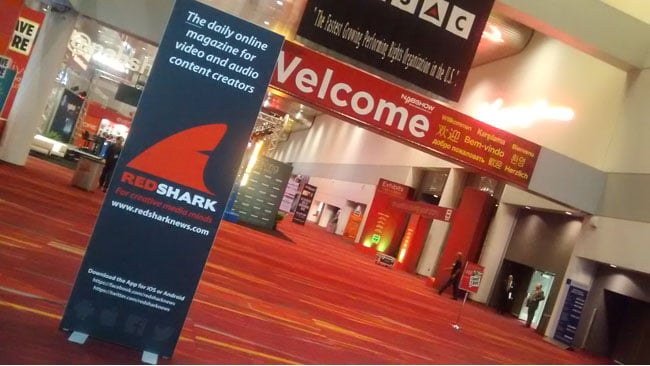
 NAB Show at the Las Vegas Convention Center
NAB Show at the Las Vegas Convention Center
In advance of NAB 2016, Phil Rhodes puts the show in perspective, and takes a look at the elements that actually have the power to shape the market.
Trade show announcements are like the evening news. Every 6pm, there will be half an hour of reportage on current affairs and something will be the top story, generating the powerful yet perhaps dangerous impression that everything that's ever been a top story is of equal import. Similarly, every April, several tens of thousands of people go to Las Vegas and spend the better part of a week gawking at equipment. One of those pieces of equipment (or perhaps a handful, in each of a few broad categories) will be widely talked about and the terms "game-changing" will be bandied about, as if there's any reliable tendency for the game to be changed under any circumstances.
The game remains the same?
In fact, the game hasn't been that significantly changed since the introduction of HD video to cinematic filmmaking and even that was really just a desperate attempt to directly replace one technology with another. It probably took ten years longer than it really technologically needed to, suggesting that the game doesn't like change and, in fact, can be quite determinedly resistant to change. That delay is often cited as a point of pride; money could have been saved sooner, but wasn't, because people were being careful.
Well, OK, a lot of that is down to the fact that ways were carefully found (or manufactured) to ensure that the total amount of money involved in film production didn't significantly change with digitisation. The creativity with which that's still done is often hilarious to independent filmmakers, whose workflows are often effectively indistinguishable from those applied to expensive theatrical features, though the price gap is somehow gargantuan. What saved the money was digital distribution. The cost of a 35mm camera department was always trivial to a big production and the cost of everything else was always prohibitive to a small one. So the world turns.
What's really impactful?
 NAB Show attendees
NAB Show attendees
We could meander around these topics all day, but the much-delayed point is this: YouTube can change the film and TV market. The attitudes of the Twitter and Facebook generation can change the film and TV market. A company releasing a new camera with an extra couple of stops of dynamic range can't. At some point, when we've figured out how to reliably construct a 16- or 18-stop digital video camera that shoots at 500 frames per second with a low-noise sensitivity of 100,000 ISO and costs fifty US dollars, this will become horribly obvious. And, what's worse, we'll have to put up with a lot of hyperventilating Twitter and Facebook posts regarding YouTube videos of things appearing to move very, very slowly in the dark, which will be boring.
 RedShark at NAB Show
RedShark at NAB Show
The moral of the story is that breathless exclamations about the enormous potential impact of new releases should be viewed with expressions of pained dubiety until such time as that impact is realised (or at least a little closer to being realised than a camera-shaped object in a glass box at the Las Vegas Convention Center). That's not to decry progress. We'll see more frames per second, more sensitivity and more stops or perhaps more lumens per watt from lights and more features from sound equipment and all the other things that NAB shows us, every year, are the inevitable products of human invention.
All of these things are good. But unless someone introduces a matter transporter, a faster-than-light drive or a rechargeable device that can cause all the world's YouTube users to watch specific videos on demand, let's keep the knots out of our underwear.
Tags: Business


Comments